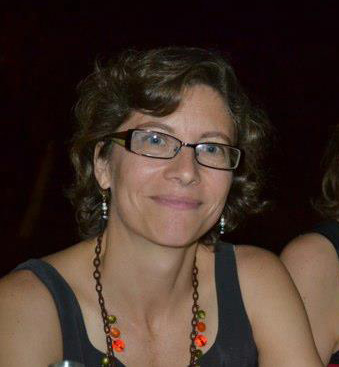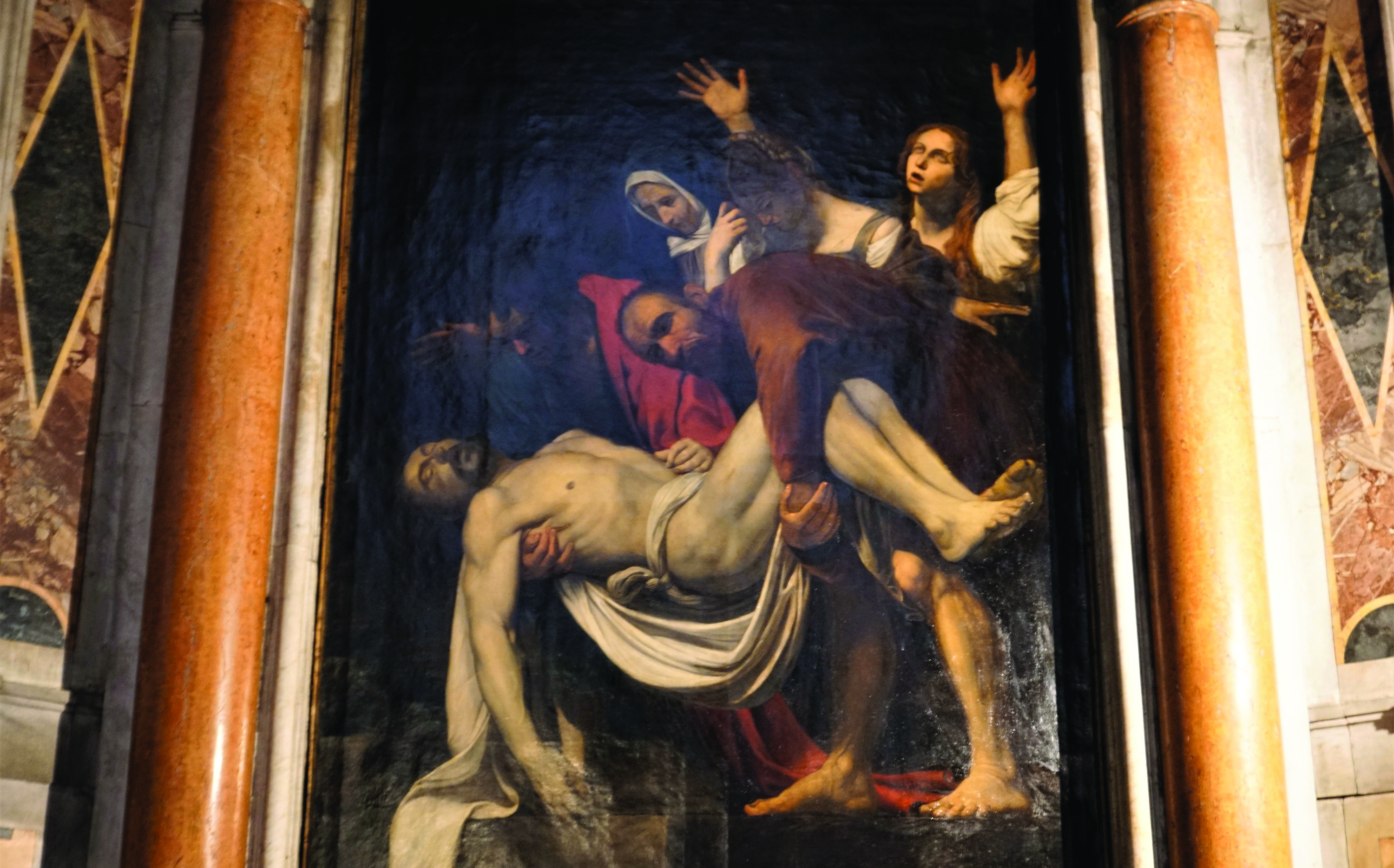Considered one of Caravaggio’s best masterpieces, “The Entombment of Christ” was covetingly confiscated by the French for its newly opened Louvre Museum as Napoleon swept down the Italian peninsula in the late 18th century.
The painting was one of more than 100 works of art Pope Pius VI was forced to give up as part of a peace treaty between Revolutionary France and the Papal States in 1797.
However, when the masterpiece was returned in 1816, it did not end up back in its original home: a side chapel in the Oratorians’ Santa Maria in Vallicella Church, also known as “Chiesa Nuova,” in Rome. Pope Pius VII instead put it safely in his picture gallery, where it can be admired today as part of the Vatican Museums’ vast collection.
While the canvas, which measures 10 feet by 6.6 feet, survived the plunder, its deeper meaning and function as an altarpiece is usually lost on most visitors. As Quatremère de Quincy, a French architect who fiercely opposed taking art away from Italy, warned in 1796: “Eradicating the context in which a work was created irreparably impairs its legibility.”
To explain how to read Caravaggio’s piece “in situ,” the Oratorians invited Alessandro Zuccari, a leading expert on Caravaggio and professor of art history at Rome’s La Sapienza University, to give a lecture at their Church Jan. 24.
The massive oil painting was commissioned to decorate the wall above the altar in a chapel of the Church. Completed in 1603, the work shows Nicodemus and the apostle John struggling with the heavy, lifeless body of Jesus to place him on an anointing stone and prepare his body for the entombment.
Caravaggio used Michelangelo’s Pietà in St. Peter’s Basilica for inspiration, Zuccari said, and created a similarly striking form of Jesus draped helplessly in someone’s arms and included a similar hand holding him up, gripping his flesh by the wound on his side.
It was also a nod to his namesake, he said. Born Michelangelo Merisi, Caravaggio wanted to be the Michelangelo Buonarroti “of the new century” and “emulate and outdo the great masters” with his new style.
In Caravaggio’s Entombment, three women are looking on with their own personal expression of grief and different gestures of prayer: the Blessed Virgin Mary extends her arms wide like a cross, Mary Magdalene bows her head and Mary, the wife of Clopas, throws her arms up and gazes toward the heavens.
Bathed in bright light, the crucified Jesus is the painting’s focal point, but his finger is firmly touching the anointing stone below with its sharp cornerstone edge glinting in the light and jutting out toward the viewer, Zuccari said. It is the prophetic sign of victory over death in Psalm 118:22, “The stone the builders rejected has become the cornerstone.”
However, when the painting can be seen at the altar during Mass, the genius of Caravaggio’s composition truly comes through, Zuccari said. A copy of Caravaggio’s Entombment was put above the altar in 1797. The copy “is not exactly the best,” he said, “but it is at least useful” for getting an idea.
Father Maurizio Botta, an Oratorian priest at the parish, demonstrated the effect for Catholic News Service Jan. 25.
The painting’s cornerstone falls precisely at the center of the altar where the priest stands.
When the priest elevates the host, it appears as if he is reaching up to receive the body on the wall and suddenly, for the congregants kneeling, Nicodemus’ eyeline is focused on the host, not the viewer – both critical cues for the faithful to understand the moment.
Father Botta explained he does the same demonstration during catechism classes to show the children “the relationship between Christ’s body and him alive in the Eucharist.”
Oratorian Father Simone Raponi, the organizer of the lecture with Zuccari, told Vatican Radio that Caravaggio really understood “the modern sense of spirituality” promoted by the Oratorian’s founder St. Philip Neri.
So much attention has been given to Caravaggio’s “difficult” personality and behavior, that his reputation as “the cursed artist” or as an anti-conformist further risks “removing Caravaggio from the real authentic (artistic, spiritual and cultural) context in which his work emerges and matures,” he said Jan. 20.
“In my opinion, he understood the meaning of modern spirituality: the divine can be glimpsed in reality” and not sought out in the abstract and what is beyond this world, he said.
Caravaggio was very close to and collaborated with members of the Oratorians while in Rome, he said, and understood the order’s charism.
It is not known whether Caravaggio ever met St. Philip, who died in 1595, Father Raponi said, but there is a legendary exchange between the two, which, whether it actually occurred or not, offers a life lesson.
He said, “St. Philip tells Caravaggio: ‘I see two wolves inside of you, one fighting the other, trying to tear each other apart.’ And the painter asks: ‘Which one will win?’ St. Philip responds, ‘The one you feed more.’”
St. Philip saw faith as something that had to come from within as an intimate relationship with God and to grow by “nourishing the soul,” he said.
“So, these lights and shadows that you somehow find in Caravaggio’s paintings, these two wolves, perhaps, that struggle, St. Philip teaches that the nourishment should be given to the light in Caravaggio’s life and in our lives,” he said.











